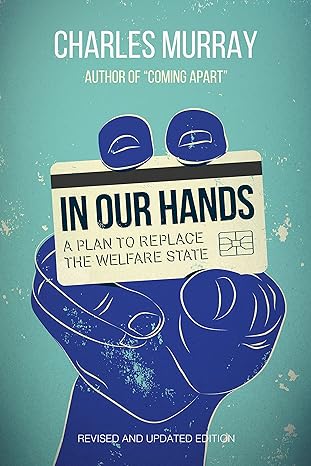In 1992, Bill Clinton promised “to end welfare as we know it.” In 2006, Charles Murray, a political scientist who is often controversial but never ignored, may have figured out how to do just that. A libertarian with a deep concern for those trapped in poverty, Murray outlines in his book “The Plan,” which combines America’s extraordinary wealth with a vastly reduced bureaucracy. The goal is finally to level the playing field in American life.
The basic premise of the Plan is simple: every American citizen, over 21 and out of jail, will receive, yearly, $10 000 in today’s dollars. Murray proposes that $3 000 of that be directed to purchasing health insurance, and, recognizing that health costs are ever increasing, suggests that ultimately the plan provide each American with $7 000 plus the cost of health insurance. Those earning less than $25 000 a
year would pay no taxes on the payment; those earning more than $50 000 would repay half, but no more.
Murray admits that, initially, his plan will cost more than continuing current social spending schemes. Within ten years, though, the costs will converge, and every year thereafter, the government and thus taxpayers will save significantly under this new program. He also shows that for almost all Americans, even the most poor, real access to the necessities of life would be improved under his proposal.
The first half of this book concerns itself with an explanation and defense of the technical aspects of the Plan, which is bolstered by the lengthy appendices. The second portion of the book addresses the philosophy behind the Plan, and is persuasive. Murray argues that five things are necessary to personal fulfillment: security, freedom from want, meaningful relationships, vocation, and self-respect.
Providing the first is the direct responsibility of government; after all, people living under threat of military attack are unlikely to live happily. The second, providing for needs, has historically been an indirect responsibility of government, in that its policies ought to promote a strong economy. In the 20th century, this came to be considered a direct responsibility of government. The final three categories, though, Murray considers best to be attained by minimizing government intervention in the lives of its citizens. This is a goal that his plan would fulfill; citizens would be given an annual cash transfer, which they must use as they see fit to live their vision of the good life, and to plan for their own futures.
The plan is not without flaws, particularly in some of the practical details. Drugs are one of the fastest growing and most effective areas of medical care; Murray’s plan could well take many years more
to become cost-effective if pharmaceutical costs continue on their current trajectory.
One group that will fare poorly under Murray’s scheme are never-wed mothers with many children. Murray argues that removing incentives for extramarital births will ultimately result in fewer children
raised by single parents, and he may well be right; nonetheless, the question of how to deal fairly with such people after radically changing the social safety net must be addressed. And while many
members of the underclass would use their stipend to improve their living conditions, it is hard to see how giving a drug addict several thousand dollars a year with no strings attached could be anything but
catastrophic.
Murray all but admits in his book that the Plan is currently politically impossible. Despite this, his book is a challenge to all who make and debate social policy. It may, in fact, be possible to provide the necessities of life for all, without turning the recipients into wards of a nanny state, bereft of incentives to better themselves. It may be possible to spend less money to produce vastly better outcomes. And if this is possible, we owe it to ourselves to take seriously such a programme.



